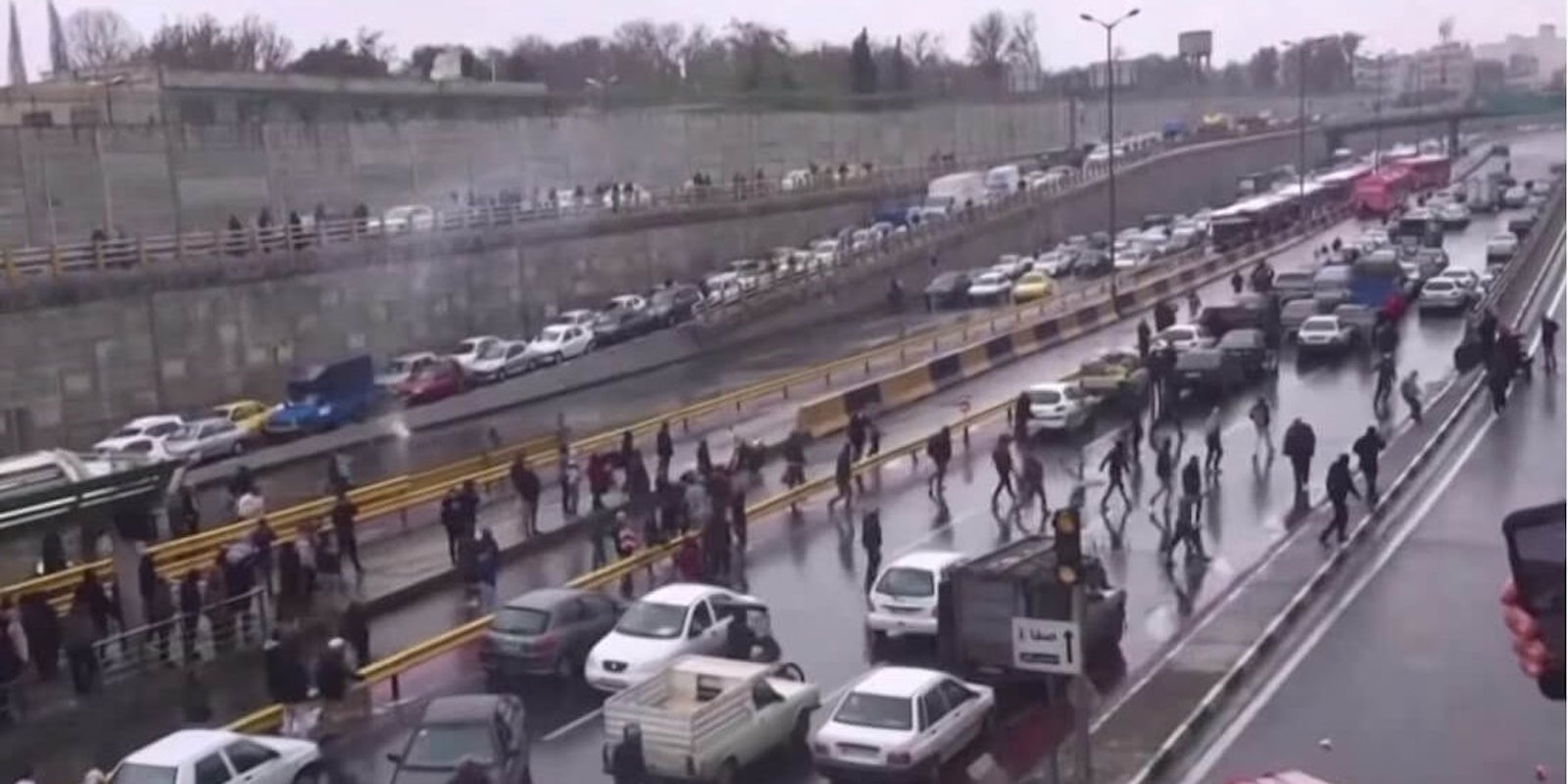In an attempt to quell last month’s protests over gas prices, Iran implemented what observers called “the largest internet shutdown ever.”
Last week, the government began restoring internet access to the nation. Mobile phone access to the internet remains blocked.
Since then, videos have begun to emerge of the chaos and violence that occurred during the blackout. Some of these videos show human rights abuses being committed by security forces, including shooting into crowds of unarmed protesters, said Amnesty International researcher Raha Bahreini in a New York Times video op-ed.
People in Iran are slowly getting back online after an internet blackout — and sharing photos and videos that document atrocities. @RahaBahreini, a human rights researcher, sifts through the evidence. pic.twitter.com/F8Mv6Vtcvj
— New York Times Opinion (@nytopinion) December 2, 2019
Last month, the Iranian government announced steep increases to gas prices, which it claimed was necessary due to the United States’ economic sanctions. In response, thousands of Iranians took to the streets in protest. Banks and gas stations were burned, and traffic ground to a halt as crowds destroyed statues and photos of the Ayatollah. The protests were deemed the most widespread in the nation since at least 2009.
Sometime around Nov. 15, the internet went dark. By then, dozens had been killed, hundreds injured, and more than 1,000 arrested.
As the government attempted to restore order in the ensuing weeks, some information nevertheless trickled out. The U.S. State Department has reportedly received 20,000 images, emails, and texts from Iranians heeding Secretary of State Mike Pompeo’s public call for evidence showing the state violently suppressed protests during the blackout.
Since internet access was restored in parts of the country, information about what happened during the blackout, as well as images and videos, have begun circulating on social media.
Hundreds were reportedly killed and thousands arrested, though estimates vary widely, with some saying as many as 600 deaths and 10,000 arrests.
Protests in Iran:
— Hananya Naftali (@HananyaNaftali) November 24, 2019
Over 300 people killed.
Over 4000 injured.
Over 10,000 arrested.
The UN doesn’t care because they can’t blame Israel. 💔 #IranProtests pic.twitter.com/8hg2V6kCMf
Death Toll in Iran Protests Surpasses 600 Wave of Arrests Continues.#Iran #IranProtests #FreeIran https://t.co/1jbat1rp3O
— Mohammad Mohaddessin (@Mohaddessin) December 1, 2019
https://twitter.com/IranProtests8/status/1201358751846084608?s=20
In response, the Iranian government has released a video contradicting reports of state-sanctioned violence against unarmed protesters. The propaganda piece with English subtitles argues that the protesters were enemies who belonged to a mass conspiracy, which aligns with the government’s claim that foreigners, monarchists, and opposition groups were behind the protests.
“The Iranian nation quashed the enemy’s movement,” the Ayatollah says in a speech amid videos attempting to paint the protesters as lawless and violent.
Much like the internet blackout, the online battle to determine what is the truth is similar to that seen in Syria when Turkey invaded in October.
Your Saudi backed propaganda wont work.
— the islamic republic of iran🇮🇷 (@islamiciraniri) December 2, 2019
The Islamic Republic of Iran will forever stand tall and strong. 💪🏻🇮🇷 pic.twitter.com/kCP8d1KweK
Pouya’s mother, an Iranian protester killed recently in Iran says: I went out to protest with my son and we held hands while joining the crowd. This is our obligation for liberty in Iran. If those like me and Pouya don’t protests then who will?#IranProtests @USAmbUN @USAdarFarsi pic.twitter.com/obN0wCRTWt
— Iran Freedom (@4FreedominIran) November 30, 2019
The Iranian government has warned that some internet access might be permanently suspended.
READ MORE:


